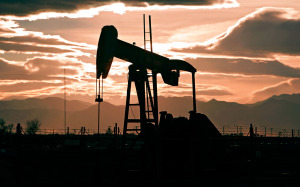 Are you up to date on your Fracking? If not, we can enlighten you. In the most elementary terminology, Fracking means using a powerful drill to crack a big shale rock deep about a mile into the earth’s surface to extract natural gas.
Are you up to date on your Fracking? If not, we can enlighten you. In the most elementary terminology, Fracking means using a powerful drill to crack a big shale rock deep about a mile into the earth’s surface to extract natural gas.
Now, we’ll proceed with a slightly more technical explanation. Fracking, also known as hydraulic fracturing, refers to the method of removing natural gas from layers of shale rock. These rocks are located deep within the earth’s surface and were once believed to be inaccessible. Today, three dimensional imaging identifies the best drilling path. After the extraction area is determined, it is walled-off with cement to protect groundwater from becoming vulnerable to contamination, once the shale is broken. The ability to drill both horizontally and vertically, enables the least complicated means of injecting the highly pressurized liquid that will be used to facilitate the actual fracking. Then, powerful hydraulic drills are used to carry-out the injection. The pressure of the liquid will actually create fractures within the deepest layers of shale rock in order to reach and extract the natural gas.
Though fracking is a successful and innovative process, it is not a rapid one. One drill can often take more than a month to complete. Perhaps the most important news related to fracking is that in early August of this year, the United States Department of Energy announced its allocation of $18 million dollars to underwrite thirty-two research projects, all focusing on state-of-the-art geothermal research. The funds are to be distributed as follows:
- $10 million to develop enhanced geothermal hydro fracturing systems
- $4 million to develop advanced liquid technology to extract heat from rock for the purpose of creating electricity and to gather valuable minerals
- $4 million to explore, identify and map the areas, most conducive to those heat and rock formations with the greatest economic potential for geothermal development.
When granting the funding, Doug Hollett, Director of the Department of Energy’s Geothermal Technology Office shared the following: “Investments in leading-edge geothermal technologies are diversifying our nation’s energy portfolio today, and could help power our low-carbon future tomorrow. The projects announced today aim to spur the development of cost-competitive geothermal energy and help provide U.S. manufacturers with the critical materials they need to build clean energy technologies right here in the United States.”
According to Mike Jacobs, Senior Energy Analyst at the Climate & Energy Program and a contributing writer for Concerned Scientist publications, one of the primary areas enjoying the fracking boom is located in the northern Appalachian Marcellus shale region, where they are producing seven times more natural gas today than they did in 2010. More importantly, the benefits have already begun to manifest themselves. There are many repercussions that exist in the northern Appalachian region, that go along with supplying 20 percent of the gas produced in the continental U.S. However, in the past decade, sustainable energy supplies have also grown in similar amounts. Wind power in the U.S. grew seven times from 2006, U.S. solar increased 10 times since 2009, and customer-based demand response in the Northeast grew seven times from 2006. Jacobs said “We enjoy an abundance of energy supplies, but which we choose will affect our health and the well-being of our communities.


